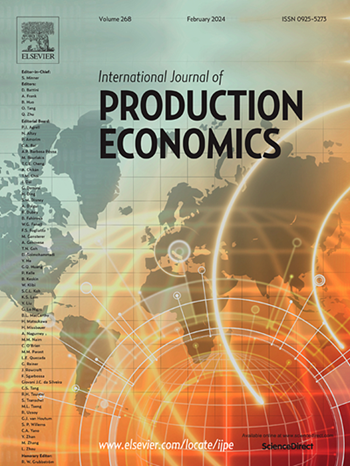Optimal buy-online-and-pick-up-in-store strategies in the livestreaming selling context
IF 10
1区 工程技术
Q1 ENGINEERING, INDUSTRIAL
引用次数: 0
Abstract
To enhance online consumers' experience, retailers have adopted a series of measures, such as offering Buy-Online-and-Pick-up-in-Store (BOPS) to reduce waiting time for delivery and opening livestreaming channels to enhance shopping entertainment. In practice, most retailers only provide BOPS services for traditional online channels or do not provide BOPS services. However, a few retailers offer BOPS services on both channels. Reasons for cross-channel BOPS strategy heterogeneity remain unclear. This paper develops an analytical model to study a retailer's optimal BOPS strategies and corresponding pricing decisions for different channels. The results indicate that when consumers' hassle costs of purchasing through livestreaming are moderate, dual-channel BOPS is optimal if operating costs are low; otherwise, offering no BOPS becomes the optimal strategy. However, under high livestreaming hassle costs, the retailer should provide BOPS exclusively for the traditional online channel, as consumers would not purchase through the livestreaming channel under the other two BOPS strategies. Furthermore, we extend our model to explore optimal BOPS strategies for a retailer with offline sales. The conclusions provide valuable decision-making guidance for retailers implementing BOPS in livestreaming selling contexts.
在直播销售环境下的最优在线购买和实体店提货策略
为了提升网上消费者的体验,零售商采取了一系列措施,例如提供网上购物和到店提货(BOPS)以减少送货等待时间,以及开设直播渠道以增强购物娱乐。在实践中,大多数零售商只对传统的在线渠道提供BOPS服务,或者不提供BOPS服务。然而,一些零售商在两个渠道上都提供BOPS服务。跨渠道BOPS策略异质性的原因尚不清楚。本文建立了一个分析模型,研究零售商在不同渠道下的最优BOPS策略和相应的定价决策。结果表明,当消费者通过直播购买的麻烦成本适中时,当运营成本较低时,双通道BOPS是最优的;否则,不提供防喷器将成为最佳策略。然而,在高昂的直播麻烦成本下,零售商应该专门为传统的在线渠道提供BOPS,因为在另外两种BOPS策略下,消费者不会通过直播渠道购买。此外,我们扩展了我们的模型来探索具有线下销售的零售商的最佳BOPS策略。研究结论为零售商在直播销售环境下实施BOPS提供了有价值的决策指导。
本文章由计算机程序翻译,如有差异,请以英文原文为准。
求助全文
约1分钟内获得全文
求助全文
来源期刊
CiteScore
21.40
自引率
7.50%
发文量
266
审稿时长
52 days
期刊介绍:
The International Journal of Production Economics focuses on the interface between engineering and management. It covers all aspects of manufacturing and process industries, as well as production in general. The journal is interdisciplinary, considering activities throughout the product life cycle and material flow cycle. It aims to disseminate knowledge for improving industrial practice and strengthening the theoretical base for decision making. The journal serves as a forum for exchanging ideas and presenting new developments in theory and application, combining academic standards with practical value for industrial applications.

 求助内容:
求助内容: 应助结果提醒方式:
应助结果提醒方式:


